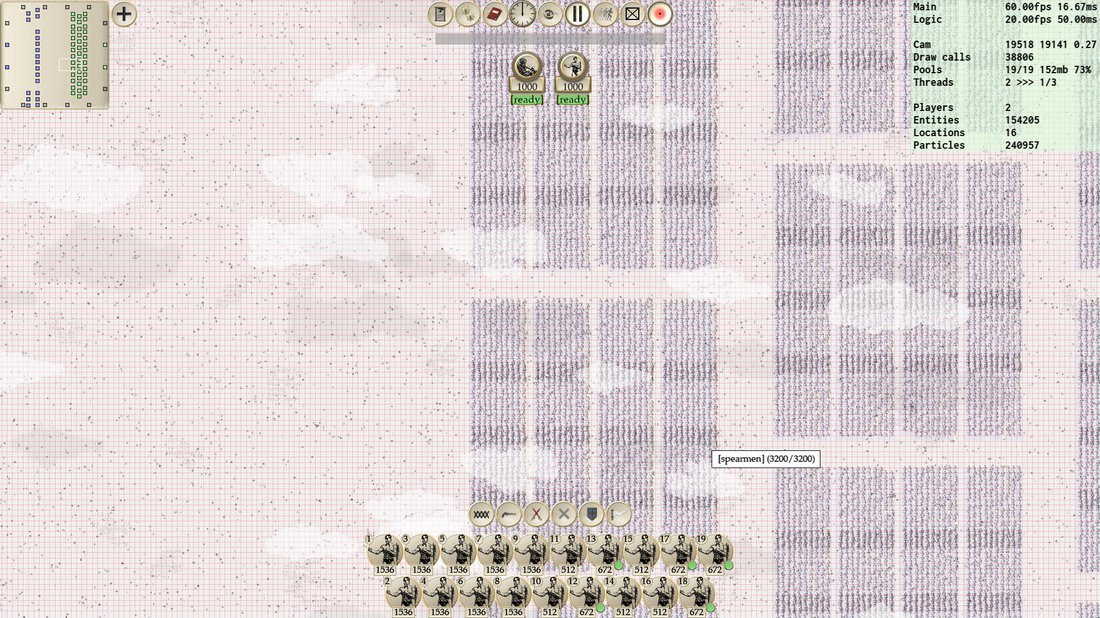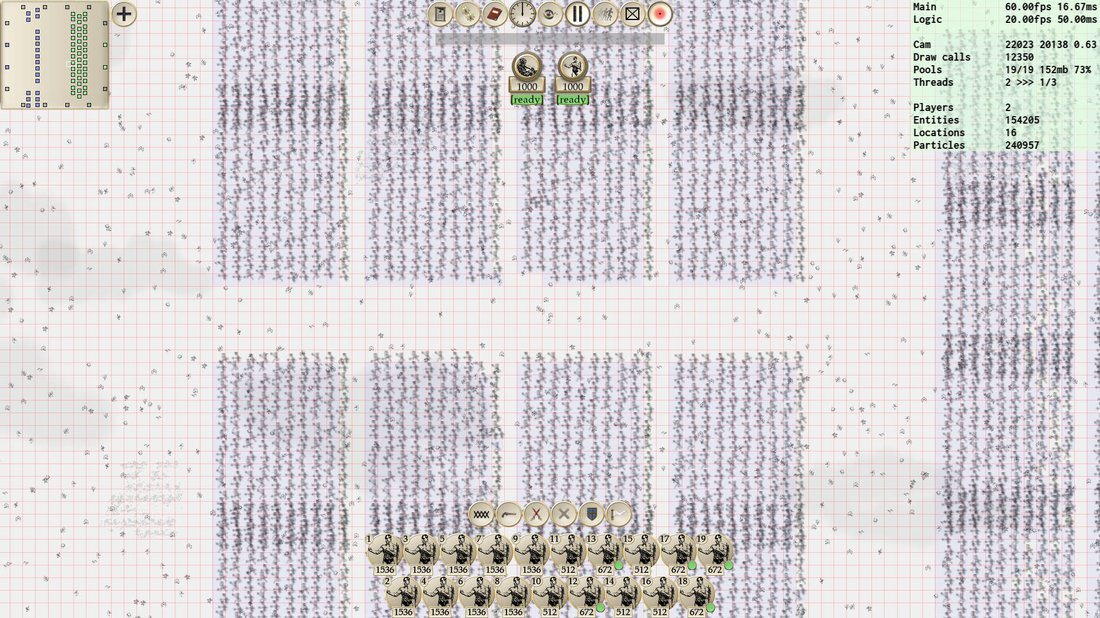3 hours ago, ferrous said:
I'm assuming your end game is some sort of gameplay like this
Somewhat. I want the epic scale, but with physical rigidity.
9 hours ago, Kylotan said:
I expect the cache coherence is almost zero with rows that long. A more complex spatial database - perhaps even just a large grid of smaller grids - may give you significantly faster lookups much of the time
Indeed. I hadn't thought about it before, but since 8 cells are on 3 different rows, that means there's 3 cache line miss per collision detection. But what if instead of using a more complex system, I would just dumb down the collision detection accuracy? If I let enemy entities walk into a same cell, then all I have to scan is my own cell to see if there's any enemy up close. I'm not sure if that would still look anything like total war though.
9 hours ago, Kylotan said:
your grid is too small to give you much benefit
Why is that?







